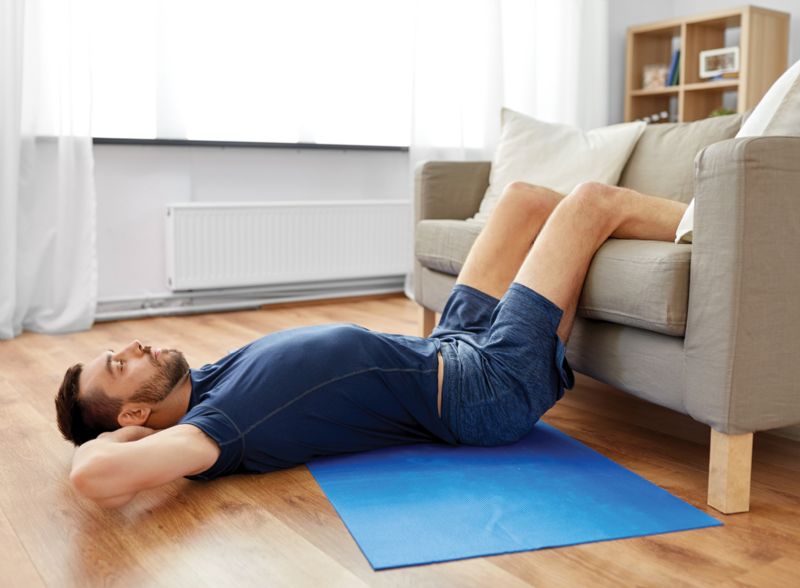- Home
- News, Articles & Reviews
- All Health & Beauty
- Looking Good, Feeling Great
- Medical Health
- Mirror Mirror on the Wall
- Style & Fashion
- General
- Vintage & Sustainable Fashion
We are hiring! Please click here to join our growing magazine delivery team in Gloucestershire!
Areas
Health & Beauty
Archive

Benefits of training your core
All Areas > Health & Beauty > Looking Good, Feeling Great
Author: Will Mbanga, Posted: Monday, 28th December 2020, 09:00
After the introduction to the core and its importance to physical performance and activities of daily living last month, we’re now going to look at the benefits of training the core, along with some tips for developing your own foundation.
Research shows that core strength is the foundation for effective athletic movement, as well as bodily control for activities of daily living. It is the ability of your trunk to support the effort and forces from your arms and legs, so muscles and joints can perform in their safest, strongest and most effective positions.
By training specifically for core stability and strength, you will gain a number of benefits:
• Greater capacity for power and speed generation
• More efficient expression of force
• Decreased injury risk/ improved rehab outcomes
• Increased agility due to better body control
• Improved balance and coordination
• Better posture and ‘bracing’ of lumbar spine
• More stable centre of gravity, reducing falls
• Improved movement efficiency
While the theoretical basis of core training is to increase the recruitment efficiency of the deep, underlying muscles around the trunk and hip/ pelvic region, I recommend engaging in a range of dynamic exercises involving the whole body.
My rationale for this is that core stability and strength as a foundation should be defined by the ability of your core muscles to work in an efficient and coordinated manner, maintaining correct alignment of the spine and pelvis, enabling efficient, safe and effective movements.
This approach involves exercises that require the core muscles to maintain correct postural alignment while the body is engaged in dynamic movement.
The abdominal hollowing technique
Core stability training begins with learning to co-contract the Transversus Abdominis and Multifidus muscles effectively, as this has been identified as key to the lumbar-support mechanism. To perform this co-contraction, you must learn to perform the ‘abdominal hollowing’ technique:
• Start by lying on your back, knees bent.
• Your lumbar spine shouldn’t be either arched up or flattened against the floor, but aligned normally with a small gap between the floor and your back. This is the ‘neutral’ lumbar position you should learn to achieve.
• Breathe in deeply and relax all your stomach muscles.
• Breathe out and, as you do, draw your lower abdomen (belly button) towards the floor.
• Hold the contraction for 10 seconds, stay relaxed, allowing yourself to breathe in and out while holding the position.
• Repeat 5-10 times.
Once mastered lying on your back, practice hollowing lying on your front, four-point kneeling, sitting and standing. In each position get your lumbar spine into neutral before performing the hollowing movement.
Within this repertoire of core stability there is a large range of exercises, the suitability of which will vary according to the movement needs or experience of each individual.
If you have any difficulty performing these exercises, seek the help of a personal trainer or other professional.Copyright © 2025 The Local Answer Limited.
Unauthorized use and/or duplication of this material without express and written permission from this site's author and/or owner is strictly prohibited. Excerpts and links may be used, provided that full and clear credit is given to The Local Answer Limited and thelocalanswer.co.uk with appropriate and specific direction to the original content.More articles you may be interested in...


© 2025 The Local Answer Limited - Registered in England and Wales - Company No. 06929408
Unit H, Churchill Industrial Estate, Churchill Road, Leckhampton, Cheltenham, GL53 7EG - VAT Registration No. 975613000You are leaving the TLA website...
You are now leaving the TLA website and are going to a website that is not operated by us. The Local Answer are not responsible for the content or availability of linked sites, and cannot accept liability if the linked site has been compromised and contains unsuitable images or other content. If you wish to proceed, please click the "Continue" button below:




